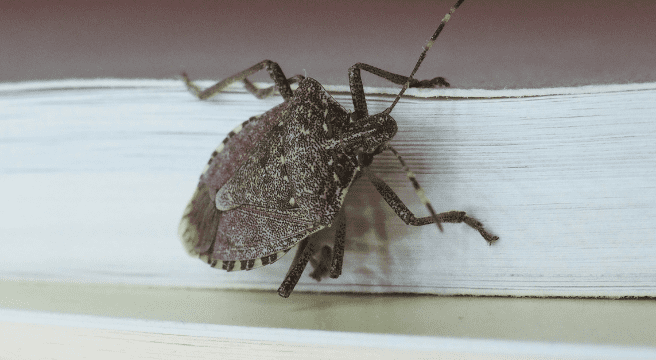READY TO GET STARTED?
REQUEST A FREE ESTIMATE
Fill out the form below or call (888) 466-7849 for a free, no-obligation estimate.

Have you ever seen those armor-shaped bugs on the walls in your home? If yes, then you have a stinkbug problem. These bugs are attracted to warmth and are in search of protected, overwintering sites where they can enter houses in large numbers. With the right preventative measures placed throughout your home, these pests can be put to a stop.
Stinkbugs are an invasive species that tend to release an odor when disturbed or crushed. These foreign pests are native to China, Japan, Korea, and Taiwan and were first identified in the States in the late 90’s. While these overwintering pests do not possess any real threat to humans, they can become a nuisance when an infestation occurs.
Stinkbugs are known to feed on a variety of host plants, including fruits (e.g., apples, peaches, figs, apricots, and persimmons), many ornamental plants, and weeds. While these pests don’t spread disease or cause structural damage, they are considered more of a nuisance to people if they make their way indoors. Stinkbugs prefer moist, mild climates and can be found in bathrooms and kitchens. Stinkbugs spend the spring and summer seasons outdoors then will seek shelter from the winter elements indoors.
During the winter months, stinkbugs go into a phase known as diapause, which is like hibernation, where the bugs go inactive during the chilly weather. When the stinkbugs find a spot to overwinter, they release a pheromone that attracts other stinkbugs to their location. While they typically stay dormant until spring, unusually warm spells during the winter can bring them out full force.
If you meet stinkbugs in your home, the best way to get rid of them is to vacuum them up and immediately dispose of the bag. When stinkbugs are threatened, disturbed, or squashed, they emit a smell that has been described as anything from cilantro to rotting almonds to spoiled fruit. The best way to prevent stinkbugs is to ensure that all cracks, crevices, gaps, or holes in your foundation are fixed. They can also enter through chimneys, air conditioning vents, or underneath house siding. Check these areas throughout your house to make sure there are no openings or gaps to help prevent them from entering.
If you suspect you have a problem with stinkbugs, contact a professional local pest control company who can help identify any entry points pests may be using and provide a treatment plan to eliminate them. They can also use a preventative spray in the late summer/early fall to help keep them out before the overwintering season sets in.
Categories